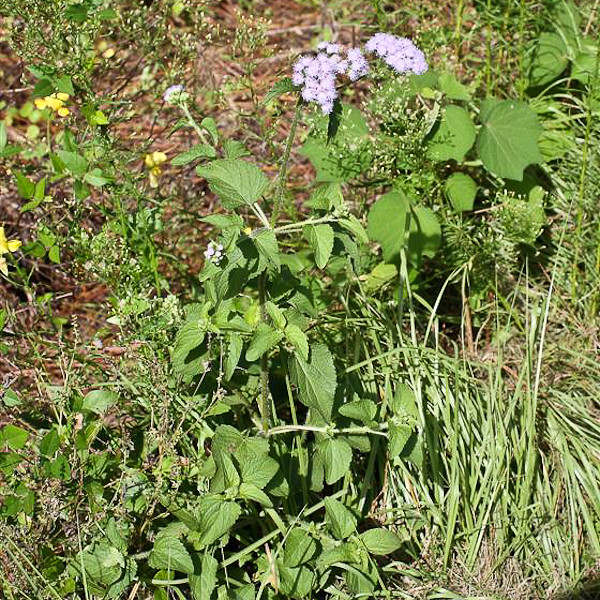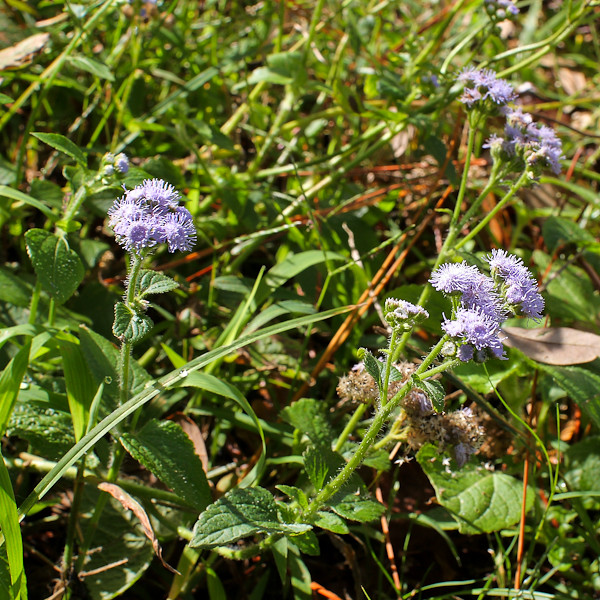
Conoclinium coelestinum
Asteraceae
Today John and I resumed work on our upcoming wildflower photo atlas shelved a year ago during Covid. We’re starting over at the top of the alphabet, which brought up a curious member of the Asteraceae in full autumn bloom now, Blue Mistflower. Saw a lot of it flowering today.
Now a small disclaimer: some of today’s blog is generalized from closely related species of Conoclinium. When one species is not well studied, turn to the rest of the genus. Mistflowers attract a broad array of pollinators, including Monarch and Queen butterflies. To dig in on that, we’re going to learn a bit from Texas biologist Monika Maekle summarizing earlier research largely by the late insect-chemical ecologist Thomas Eisner. If today’s story seems spotty, it is. It is cobbled together from different studies and has swiss cheese gaps. Call it food for thought.

Mistflower plants stink. Not in a bad way, I kind of like it. They have a strong sharp biting odor I associate with the alkaloid family of plant chemicals, including such familiar plant compounds as nicotine, caffeine, and ephedrine. Mistflowers, among many interesting compounds produce an alkaloid called intermedine, which is known from additional plants, and which is involved in insect-to-insect signaling. Its reported role among Queen Butterflies is remarkable.

Male Queen Butterflies draw nectar from Mistflowers, which no doubt protects the male Butterflies from predators, and more intricately, serves upon some chemical alteration as a sex attractant to draw the female and her eggs poisonous to pests. It may be, but not proven(!), that the toxin makes the female less attractive to subsequently encountered males.

It gets even more complicated. Remember how Mistflower draws a lot of pollinators? Remember how it reeks with chemicals known to function as insect signals? The alkaloids attract Butterflies. Seems that parasitic wasps have “learned” to follow the scent to dinner. Around 2010 UF entomologist John Sivinski and colleagues conducted a survey of numerous plants in terms of their widely varied tendencies to attract parasitoid wasps. Guess what species was #1 for Chalcid Wasps. Yep, Blue Mistflower by a whole heck of a lot. Chalcid Wasps parasitize butterfly larvae, among other vics. Some Chalcids are hyperparasitoids, parasitizing other parasitoids.

Let’s now wrap this up with some speculation: Male Queen Butterfly takes in intermedine with nectar. He uses its chemical derivative to attract a female. Upon mating, intermedine transfers to the female, with an advantage to the male of protecting the eggs the male fertilized. And maybe repelling other males? Intermedine or some other alkaloid(s) probably draw Chalcid wasps to the Mistflower which is rich in Butterflies to victimize. Wasp attacks on Queen Butterflies may (speculatively!) be mitigated by the alkaloid in the male, female, and eggs, although the eggs are deposited for larval development ordinarily on plants of the Milkweed Family.

Annie Hite
October 2, 2021 at 4:57 am
Where are you seeing mistflower?
George Rogers
October 2, 2021 at 9:18 am
Yesterday much in a wet meadow in Cypress Creek off Mack Dairy Rd.
Annie Hite
October 2, 2021 at 1:40 pm
Thanks. I get out that way occasionally but haven’t been lately so will make the effort. By the way, I took a “Going Native” online class with Laurie Albrecht over the last 3 weeks, and you were praised several times for your astute observations about our natives.
George Rogers
October 2, 2021 at 9:08 pm
Well that is nice to hear!
theshrubqueen
October 2, 2021 at 5:31 pm
I have these plants in my garden but have not seen the butterfly?
George Rogers
October 2, 2021 at 7:32 pm
Not many Queens in my garden…do see them more frequently out in natural areas
theshrubqueen
October 3, 2021 at 3:26 pm
I had my first Milkweed completely chowed down this week. Haven’t seen any Queens here.
George Rogers
October 3, 2021 at 6:48 pm
Gobble gobble…those monarch babies are a hungry bunch.
Diane Goldberg
December 25, 2021 at 7:52 am
I have lots of mistflower, which the Monarchs especially like to nectar on. Many of my butterflies like it too. I started getting the Queens after I planted White Twinevine, which is also a milkweed.
Diane Goldberg
December 25, 2021 at 8:06 am
Once, I was trimming some plants and accidentally cut one with a chrysalis on it, so I put it in a jar, but ended up with Chalcid Wasps instead of a butterfly.